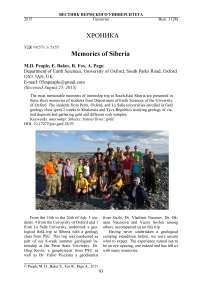Memories of Siberia
Автор: Peaple M.D., Baker E., Fox R., Pagu A.
Журнал: Вестник Пермского университета. Геология @geology-vestnik-psu
Рубрика: Хроника
Статья в выпуске: 3 (28), 2015 года.
Бесплатный доступ
The most memorable moments of internship trip to South-East Siberia are presented in these short memories of students from Department of Earth Sciences of the University of Oxford. The students from Perm, Oxford, and La Salle universities enrolled in field geology class spent 2 weeks in Khakassia and Tyva Republics studying geology of visited deposits and gathering gold and different rock samples.
Internship, siberia, yenisei river, gold
Короткий адрес: https://sciup.org/147200955
IDR: 147200955 | УДК: 91(571.1/.5):55 | DOI: 10.17072/psu.geol.28.93
Текст научной статьи Memories of Siberia
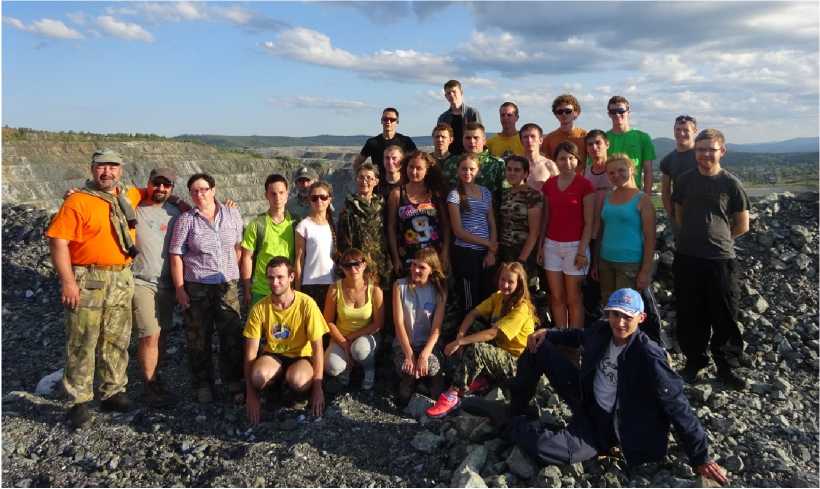
From the 10th to the 26th of July 5 students, 4 from the University of Oxford and 1 from La Salle University, undertook a geological field trip to Siberia with a geology class from PSU. This trip was conducted as part of our 8-week summer geological internship at the Perm State University. Dr. Oleg Kovin, a geophysicist from PSU as well as Dr. Fabio Pisciotta a geochemist from Sicily, Dr. Vladimir Naumov, Dr. Oksana Naumova and Victor Sovluk among others, accompanied us on this trip.
Having never undertaken a geological camping expedition before, we were unsure what to expect. The experience turned out to be an eye opening, one indeed and has left us with many memories.
The trip began with a 2-day journey on the Trans-Siberian Railway from Perm to Abakan. Although we were initially apprehensive about such a long time spent on a train, the experience turned out to be wholly positive. The small living conditions meant we bonded with the Russian students and made friends almost immediately. Our Russian friends taught us the card game “Durak” which we played countless times well into the night. This close contact with Russian students also enabled us to pick numerous Russian words, which helped us in our trip to come.
Once we arrived at Abakan station, we were whisked off in buses to our first campsite, which was shrouded in darkness. Waking up in the morning, we were greeted to a beautiful scene of bright sunshine a crystal clear lake in front of us, and a magnificent forest behind out tent. It was truly magical.
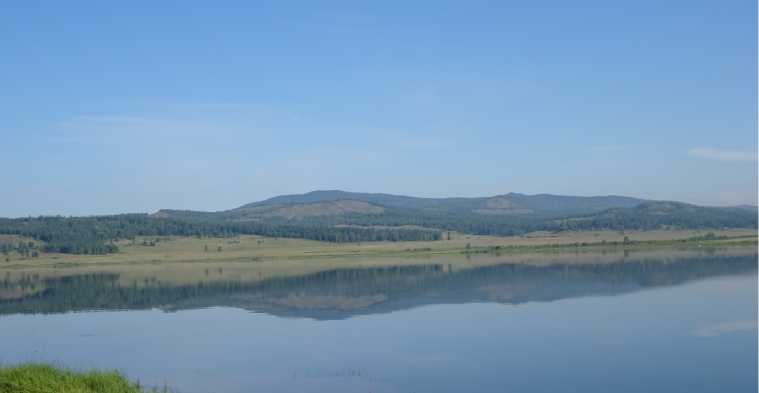
Figure 1. Lake Tyoploye. Kuznetskiy Alatau. First stop on a trip
The first excursion we undertook involved a trip to the Sorsk copper-molibdenum mine. At the gate, the Senior Geologist who showed us around the mine and who was very knowledgeable greeted us. Having never seen such a large open pit mine before in my life I was struck by the scale of the structure and the ginormous quantities of rock
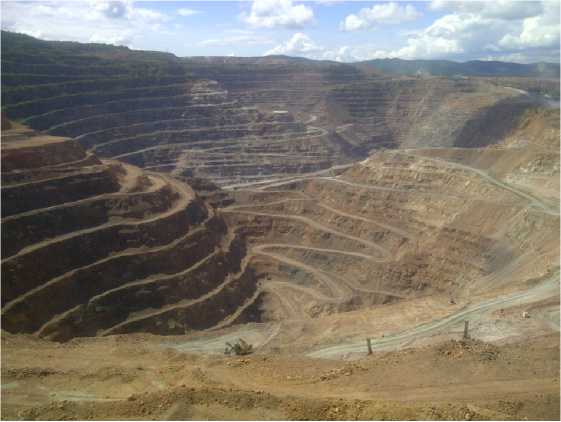
Figure 2. Sorsk open pit copper-molibdenum mine
that had to be extracted deep into the Earth. We leant that the mineral deposits were linked to a large amount of magma that had risen up from depth and heated the rocks in the area, changing their chemical composition. Later on, we had the opportunity to have hands on experience in the mine as we attempted to find a range of minerals under the instruction of Vladimir Naumov and Victor Sovluk. The excursion ended with the Senior Geologist showing us a geological map he was constructing as part of the exploration efforts of the mine.
During the trip we visited a variety of geological sites and mines but the two most memorable were the coal and asbestos mines. Being shown the inner workings of a giant Chernogorskiy surface coal mine (a site, which is becoming rarer and rarer in Europe) showed the process involved in managing and extracting coal as well as giving us a good overview of what the workers experience on a day-to-day basis. The black and grey landscape of the mine coupled with the particles in the air made it feel like we were on another planet.
The visit to the asbestos mine was also striking, as these mines are a rare breed in the 21st century. Although we were slightly concerned with the health and safety aspect of this visit our minds were soon put at ease when it was revealed that asbestos is totally safe when undisturbed. The investigative nature of some of our Russian colleagues soon had them hammering to obtain useful lithological information.
As well as viewing mineralogical extraction at mines, we were also given the opportunity to conduct our own research into the placer gold deposits located in some Siberian rivers. In order to conduct our research we had to pan for gold, which involved collecting sand at the river's edge and swilling it round in a pan in order to separate the gold bearing fraction from the rest of the sediment. This truly was a breathtaking experience and allowed us to gain a skill we would have not had the opportunity to acquire otherwise. After returning from Siberia we have analyzed the collected gold and hope to publish a paper about our findings shortly.
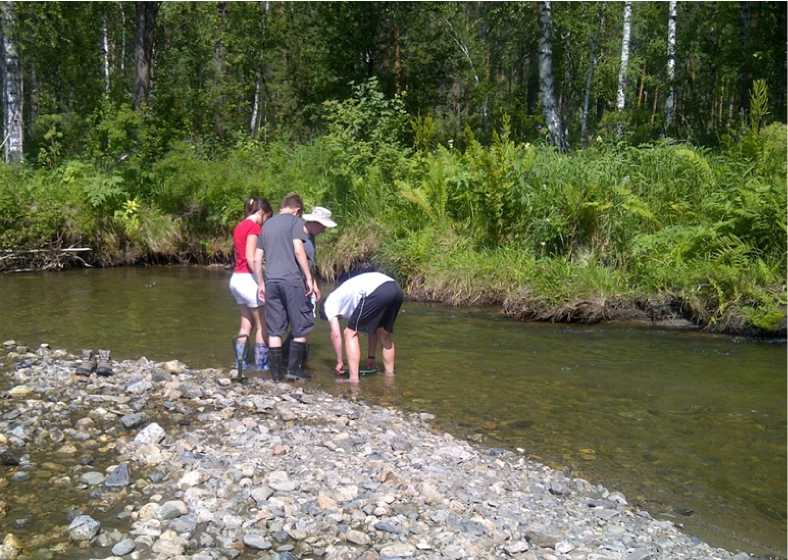
Fugure 3. Getting the panning experience
Although our schedule was packed full of interesting and informative geological learning opportunities we still found time to view many cultural features of the regions we visited. One of the museums which sticks in my mind was the trip to Tyva state museum, where we saw the development of the local society from its nomadic origins, to fledgling democracy and finally to a thriving state in the Russian Federation. The highlight of the museum was seeing the gigantic haul of gold that Archaeologists had discovered from the past nomadic tribes who had inhabited the region. Some of the gold work was so intricate that it remains an open question to this day how these people managed to create such advanced technologies. Indeed a testament to the previous inhabitants of Tyva.
On our travels, we also saw many Siberian cities and had to the chance to interact with the local populations. What caught many of us off guard was the friendly and welcoming nature of the people who were more than willing to shake our hands and make spontaneous conversation in the street. This interaction was most unexpected although it contributed greatly to the enjoyment of the trip. One of the things we did not appreciate before setting off on our travels was the differences between the regions of
Russia. This rich diversity is clearly seen in the food, religion and architecture between Perm and the Siberian regions is a testament to the multicultural nature of the Russian federation.
Although all of the scenery we saw was beautiful the most awe-inspiring views we saw were located in an untouched national park Yergaki in the western Syan. After a long journey and with the night fading our bus wound its way up a narrow mountain road eventually stopping at a summit adorned with Buddhist pray flags. Stepping out of the bus we were greeted with sharp snowcapped peaks with deep blue lakes nestled in between the ridges. The silhouettes of the mountains were surrounded by the red setting sun, leaving an image in our mind that will stay with us for the rest of the life.
Over the course of the trip, we all saw some awesome geology, ate great food and learnt about local cultural traditions. However, the most important things we gained from this trip are the enduring friendships with the Russian students. This trip taught me that regardless of your background, upbringing or societal outlook it is possible to bond with anyone. Our friendships will be the legacy of this amazing Siberian adventure.
Впечатления о Сибири
М.Д. Пипл, Е. Бэйкер, Р. Фокс, А. Пагу
Department of Earth Sciences, University of Oxford, South Parks Road, Oxford OX1 3AN, UK
E-mail: 05mpeaple@gmail.com

